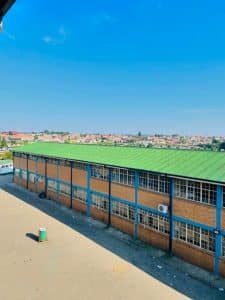CENSUS2022: WHAT YOU NEED TO KNOW ABOUT SOUTH AFRICA’S POPULATION

They are more than 62 MILLION PEOPLE In SOUTH AFRICA 🇿🇦
On Tuesday, 10 October 2023, Statistics South Africa (Stats SA) released the results of the much-anticipated Census 2022, the fourth population and housing count in South Africa after the end of apartheid.
The census provides a comprehensive picture of the demographic, socio-economic and geographic characteristics of the country and its people, which can be used for planning, policy-making and monitoring purposes.
Why was Census 2022 done?
A census is a total count of all people and households within the borders of a country, regardless of their citizenship, age, gender, race or any other factor. A census is done to collect accurate and reliable data on the size, distribution and composition of the population, as well as the living conditions and access to basic services of the households.
A census is essential for informing national and provincial governments, local municipalities, businesses, civil society and the general public about the current and future needs and challenges of the country and its people. A census also helps to measure the progress and impact of various policies and programmes that aim to improve the quality of life and well-being of the population.
How was Census 2022 done?
Census 2022 was conducted from 3 February to 28 February 2022, using three methods of data collection.
- Online self-enumeration: Households that registered online before the data collection period were able to complete the census questionnaire online using their own devices.
- Telephone self-enumeration: Households that registered online before the data collection period were able to complete the census questionnaire over the phone with the assistance of Stats SA call centre agents.
- Face-to-face enumeration: Households that did not register online or did not complete the census questionnaire online or over the phone were visited by Stats SA field workers who used digital devices to capture the data.
On Census Night, which was on 2 February 2022, Stats SA field workers also enumerated the homeless, the transient population, those in communal living quarters such as hotels, B&Bs, hospitals, correctional centres and old age homes.
When was Census 2022 done?
Census 2022 was done in accordance with the international standards and recommendations for conducting a population and housing census at least once every ten years. The previous censuses in South Africa were done in 1996, 2001 and 2011. The next census is expected to be done in 2031.

What are some of the key findings of Census 2022?
According to Census 2022, South Africa’s population has grown to 62 million people as of 2022, an increase of 11% from 55.7 million in 2011. The population growth rate has slowed down from 1.5% per year between 2001 and 2011 to 1% per year between 2011 and 2022⁴.
Some of the key findings of Census 2022 are:
- Gauteng is the most populous province with more than 15 million people (24.4% of the total population), followed by KwaZulu-Natal with 11.8 million (19%) and Eastern Cape with 7.3 million (11.8 %). Northern Cape is the least populous province with only 1.3 million people (2.1 %).
- The majority of the population (80.9%) identifies as Black African, followed by Coloured (9%), White (7.8%) and Indian/Asian (2.3%). The proportion of Black African has increased from 79.2 percent in 2011, while the proportions of Coloured, White and Indian/Asian have decreased slightly.
- – The most spoken language at home is isiZulu (24.7%), followed by isiXhosa (15.6 percent) and Afrikaans (12.1%). English is spoken by only 9.6% of the population at home, but it is widely used as a second or third language.
- – The median age of the population is 27 years, meaning that half of the population is younger than 27 and half is older than 27. The youngest province is Limpopo with a median age of 25 years, while the oldest province is Western Cape with a median age of 30 years.
- – The sex ratio is 96 males per 100 females, meaning that there are more females than males in the population. The sex ratio varies by province, with Northern Cape having the highest sex ratio (102 males per 100 females) and KwaZulu-Natal having the lowest sex ratio (92 males per 100 females).
- – The average household size is 3.3 persons, down from 3.4 persons in 2011 and 3.8 persons in 2001. The smallest households are found in Gauteng (2.9 persons) and Western Cape (3 persons), while the largest households are found in Limpopo (4.2 persons) and Eastern Cape (4.1 persons).
- – The majority of households (77.6%) live in formal dwellings, such as houses, flats or townhouses, while 13.6 percent live in informal dwellings, such as shacks or backyard structures, and 8.8% live in traditional dwellings, such as rondavels or huts⁴.
- – The majority of households (98%) have access to piped water, either inside the dwelling (66.5%), inside the yard (25.9 percent) or outside the yard (5.6%). Only 2 percent of households do not have access to piped water.
- – The majority of households (97.8%) have access to electricity for lighting, up from 84.7% in 2011 and 70.2 percent in 2001. Only 2.2% of households do not have access to electricity for lighting⁴.
- – The majority of households (79%) have access to the internet, either through a mobile phone (69.5%), a computer (7.9%) or both (1.6%). Only 21% of households do not have access to the internet.
- For more information on Census 2022, visit the Stats SA website or follow them on Twitter .





